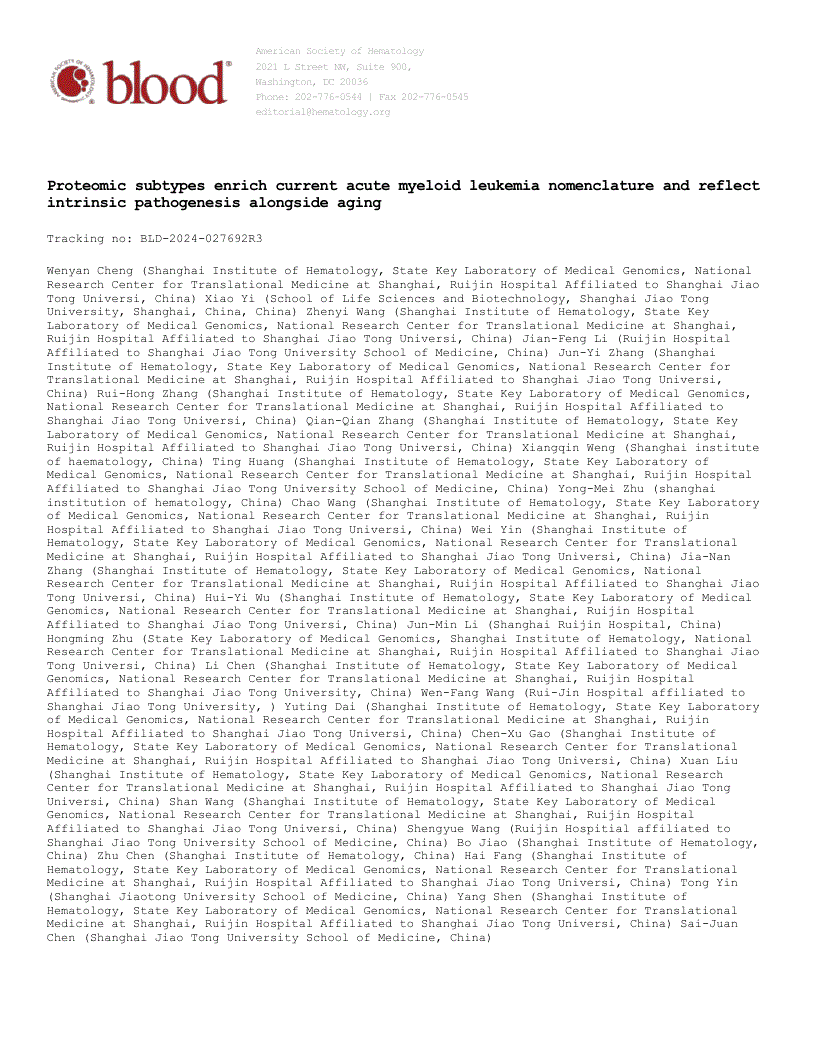Key Points
Eight proteomic subtypes with distinct clinical and molecular properties were established, enriching the 5th WHO classification of AML.
Age-associated protein profiles were identified, leading to the construction of a hematopoietic aging score with prognostic value.
Acute myeloid leukemia (AML) is a highly heterogeneous hematological malignancy that increasingly affects the elderly population, with its post-transcriptional landscape remaining largely elusive. Establishing a stable proteomics-based classification system and systematically screening age-related proteins and regulatory networks are crucial for understanding the pathogenesis and outcomes of AML. In this study, we leveraged a multi-omics cohort of 374 newly diagnosed AML patients, integrating proteome, phosphoproteome, genome, transcriptome, and drug screening data. Through similarity network fusion clustering, we established eight proteomic subtypes with distinct clinical and molecular properties, including S1 (CEBPA mutations), S3 (myelodysplasia-related AML), S4 (PML::RARA), S5 (NPM1 mutations), S6 (PML::RARA and RUNX1::RUNX1T1), S8 (CBFB::MYH11), S2 and S7 (mixed), aligning well with and adding actionable value to the latest World Health Organization nomenclature of AML. Hematopoietic lineage profiling of proteins indicated that megakaryocyte/platelet- and immune-related networks characterized distinct aging patterns in AML, which were consistent with our recent findings at the RNA level. Phosphosites also demonstrated distinct age-related features. The high protein abundance of megakaryocytic signatures was observed in S2, S3, and S7 subtypes, which were associated with advanced age and dismal prognosis of patients. A hematopoietic aging score with an independent prognostic value was established based on proteomic data, where higher scores correlated with myelodysplasia-related AML, NPM1 mutations, and clonal hematopoiesis-related gene mutations. Collectively, this study provides an overview of the molecular circuits and regulatory networks of AML during the aging process, advancing current classification systems and offering a comprehensive perspective on the disease.


This feature is available to Subscribers Only
Sign In or Create an Account Close Modal